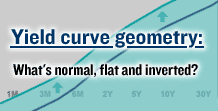|
First yield curve inversion since 2000
Ten-year Treasuries slip below 2-year notes for first time since December 2000; greenback rises.
NEW YORK (CNNMoney.com) - Treasury bonds rallied Tuesday, pushing the yield on the benchmark 10-year Treasury below that of two-year notes for the first time since December 2000. The so-called inversion in the yield curve sparked a fresh round of worries about a slowdown in economic growth next year or even a possible recession, though many analysts said the chances of the latter were remote.
The dollar rose against the euro and the yen. The benchmark 10-year note rose 11/32 to 101-8/32, yielding 4.34 percent, down from 4.37 from late Friday. The 30-year bond jumped 22/32 to 112-31/32 to yield 4.50 percent, down from 4.55 percent in the previous session. Bond prices and yields move in opposite directions. In shorter-dated debt, the two-year note was up two ticks, yielding 4.34 percent. The five-year note gained 13/32, yielding 4.29 percent. Early in the session and then again in the afternoon, the yield on 10-year notes briefly fell below that on 2-year notes, a rare event because investors tend to demand higher yields on longer-dated bonds to compensate for the risk of higher inflation later. Previous inversions have typically signaled a slowing economy or recession, and debate has raged over what an inverted curve means in the current environment of robust growth and relatively subdued inflation. (Full story.) The last time the yield curve inverted was in 2000, and before that, 1989. Each year was followed by a recession. But economists now wonder if an inversion is still a reliable indicator of recession. "This clearly suggests we are very close to the end of the tightening cycle ... (but) is not an indication of a recession," Michael Rottmann, strategist at Hypovereinsbank, told Reuters. "I think the Fed will raise interest rates by another 25 basis points to 4.50 percent which will be the peak for this cycle," he said. There are 100 basis points in one percentage point. The Fed, the nation's central bank, is widely expected to raise short-term interest rates at least one or two more times early next year. The Fed has raised short-term rates at 13 straight meetings since June 2004, each time by a quarter-point, bringing its benchmark federal funds rate to 4.25 percent, up from 1 percent, a 46-year low, when the rate increases began. Financial markets were closed Monday because of the Christmas holiday. In currency trading, the dollar rose against the euro and the yen. The euro bought $1.1828, down from $1.1846 from late Monday in New York. The dollar bought ¥117.44, up from ¥116.29 in the previous session. -- from staff and wire reports --------------------- For more on the yield curve, click here.
Click here for bond charts. |
|


